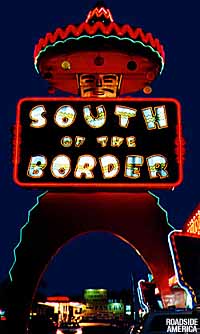So, why is the speed limit on U.S. Route 3 still set at 55 miles per hour?
Clearly, the current speed limit on Route 3 cannot be supported by the procedures for setting speed limits outlined in the state’s own document. According to the state, “a prerequisite to establishing speed regulations… is a comprehensive engineering study.” The goal of the study is to “establish a speed limit that is safe, reasonable, and self-enforcing.”
The engineering study is based on the assumption that 85% of people, left to their own devices, will drive at a safe and reasonable speed over a stretch of highway. The people who are flying past 85% of the traffic are the drivers who are not conforming to a reasonable and proper speed, and should be subject to police enforcement. The state procedures manual explains that, “this method is based on numerous studies that indicate that the majority of motorists are prudent and capable of selecting safe speeds.” The state further explains that this method “is the national standard for establishing safe speed limits.”
State procedures for speed checks specify measurements on “average weekdays at off –peak hours and under ideal weather conditions.” As a Route 3 commuter, I don’t have the radar gun or laser gun specified by the state engineers for the purposes of collecting data on vehicular speed. However, I do have a car, and I can sit in the middle lane, choose a speed, and observe the traffic around me.
Driving 55 miles per hour in the middle lane of Route 3 makes one feel like a boulder in the middle of a stream. Cars, trucks, school buses, practically the entire world is moving right or left to avoid the mid-stream obstruction. It’s easy to tell that you are not traveling faster than the federal standard of 85% of the other drivers; you are lucky to be traveling faster than two percent of the drivers on the road.
Speed up to 65 miles per hour, and you are passing some slower drivers, but you are also being passed by an equal number of drivers. I suspect that 65 miles per hour is somewhere in the middle of the distribution of highway speeds, nowhere near the 85%ile requirement for setting a speed limit. You need to speed up to about 75 miles per hour before you get the sense that you are one of the faster cars on the road, and still there are enough people passing to think you haven’t cracked the 85% threshold.
Clearly, the Route 3 speed limit does not conform to state and federal standards. While this is the most egregious case in the Commonwealth, it is not unique. The state legislature adopted a 65 miles per hour maximum in 1992, following the repeal of the nationally-mandated 55 miles per hour limit. The state bureaucracy, however, did not see fit to raise speed limits. The legislature forced the issue in 1996, when it enacted legislation that set the speed limit on 400 miles of highways to 65 miles per hour.
At that time, Route 3 was left off the list of highways for legislative intervention because it was still a narrow, four-lane road that threaded its way between lots of rocky obstacles. Since then, Route 3 was widened to six lanes, the rocky median has been removed, and we now have a road with wide lanes, gentle curves, and expansive sight lines. Despite its extraordinary design, the road is stuck with an unreasonably low speed limit that is neither enforceable nor has the long term support of the general public.
A legislative remedy is at hand. A bill has been introduced by Representative Sean Garballey (H-914) and Senator Kenneth Donnelly (S-1734) to add Route 3 to the list of legislatively-mandated 65 mile per hour zones. Given the state bureaucracy’s refusal to follow its own procedures for setting a speed limit on Route 3, this legislative action is necessary to allow safe and reasonable drivers to conform to a more reasonable speed law. Let’s hope the general court acts on this common-sense legislation soon, and brings some regulatory reasonableness to this important highway.
IMAGES: A 2005 Massachusetts Highway Department interoffice memorandum, recommending a 65 MPH speed limit on Route 3.







